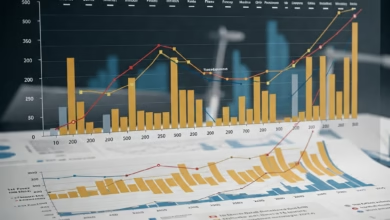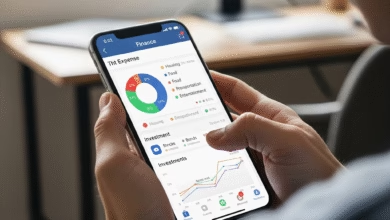Top 10 car insurance companies (2025 analysis)
Discover these 10 insurance companies to keep an eye on in 2025
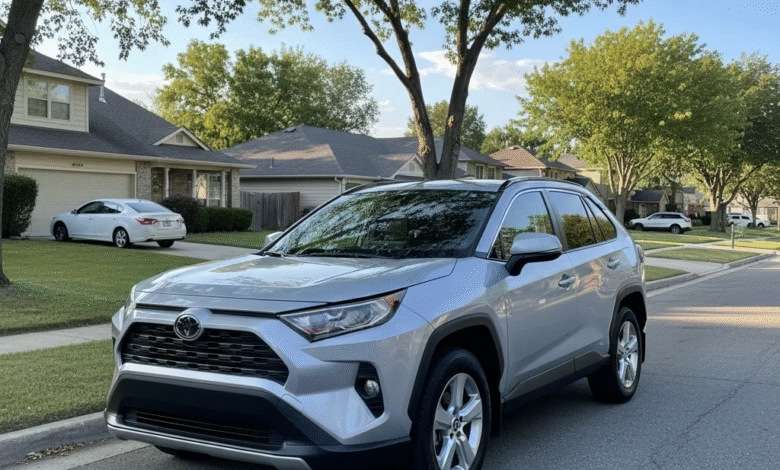
Choosing a car insurance company can feel overwhelming. You’re navigating a sea of cartoon mascots, catchy jingles, and competing claims of “saving you 15% or more.” But at the end of the day, you need a partner that will actually be there for you when the worst happens—without charging you a fortune for the privilege.
With repair costs, medical expenses, and accident frequency all on the rise, 2025 is shaping up to be one of the most expensive years for drivers. Now, more than ever, choosing the right insurer is a critical financial decision.
This comprehensive guide cuts through the noise. We’ve analyzed the industry’s top players on the factors that truly matter: customer service, financial stability, claims processing, and price. We’ll break down the top 10 auto insurance companies for 2025, detail the types of coverage you actually need, and give you actionable strategies to lower your premium.
How We Chose the Best Auto Insurance Companies for 2025

To build a list you can trust, we didn’t just look at who has the funniest commercials. Our analysis is built on a foundation of objective, third-party data to measure true quality. Here are our core criteria:
- Customer Satisfaction (J.D. Power): We heavily weighted the results from the annual J.D. Power U.S. Auto Insurance Study. This study measures customer satisfaction across five key areas: billing, policy information, claims, price, and customer interaction.
- Financial Strength (AM Best): An insurance policy is just a promise. A financial strength rating from AM Best (or S&P) tells you if the company has the cash to keep that promise, even in a major catastrophe. We only included companies with “Superior” (A+) or “Excellent” (A) ratings.
- Complaint Index (NAIC): The National Association of Insurance Commissioners (NAIC) tracks consumer complaints against insurers. We compared each company’s complaint ratio to the national median. A lower score is better.
- Coverage Options & Discounts: Does the company offer more than just the basics? We looked for valuable add-ons like gap insurance, new car replacement, and rideshare coverage. We also analyzed the breadth and depth of their available discounts.
- Digital Experience: In 2025, a clunky website or a useless app is a deal-breaker. We evaluated the quality of each company’s mobile app, online quote tools, and digital claims process.
In-Depth Reviews of the Top 10 Auto Insurers of 2025
Here is our detailed breakdown of the best auto insurance companies available to American drivers this year.
1. State Farm

Why It’s a Top Pick: As the largest auto insurer in the U.S. by market share, State Farm combines a massive national presence with a dedicated local agent model. It consistently scores above average in J.D. Power customer satisfaction rankings, especially in the claims process.
- Pros:
- Vast network of over 19,000 local agents for personalized service.
- Excellent financial strength (A++ from AM Best).
- Strong J.D. Power scores for overall satisfaction.
- Great telematics programs: Drive Safe & Save (discounts up to 30%) and Steer Clear for drivers under 25.
- Cons:
- Premiums can be higher than no-frills competitors like Geico.
- Fewer niche coverage add-ons compared to some rivals.
- Key Discounts: Safe driver, good student, multi-policy (bundle with home/renters), vehicle safety, and anti-theft.
- Best For: Drivers who want a dedicated local agent they can call or visit and who are willing to pay a slight premium for that personal relationship.
2. USAA

Why It’s a Top Pick: If you are eligible, USAA is simply in a class of its own. It consistently sweeps every single J.D. Power category for customer satisfaction, from shopping to claims. Its prices are exceptionally competitive, and its members report fierce loyalty.
- Pros:
- Industry-best customer service and claims satisfaction, bar none.
- Highly competitive premiums that are often the lowest available.
- Exceptional financial stability (A++ from AM Best).
- A full suite of financial products (banking, investing, retirement) for members.
- Cons:
- Strict eligibility: Only available to active-duty military, veterans, and their direct family members (spouses and children).
- Key Discounts: Multi-vehicle, safe driver, good student, military garage, vehicle storage, and family legacy discounts.
- Best For: Active-duty military, veterans, and their eligible family members.
3. Geico

Why It’s a Top Pick: Geico built its empire on a direct-to-consumer model that passes savings on to customers. It is known for its highly competitive pricing, user-friendly website, and one of the best mobile apps in the industry. It’s the perfect fit for the tech-savvy, cost-conscious consumer.
- Pros:
- Often one of the most affordable options available.
- Top-tier mobile app for managing policies, paying bills, and filing claims.
- Fast and easy online quote process.
- Strong financial rating (A++ from AM Best).
- Cons:
- Customer service scores are typically average; it’s not as personal as an agent-based model.
- Fewer agent offices if you prefer in-person support.
- Key Discounts: Multi-vehicle, multi-policy, good student, vehicle safety, anti-theft, and a wide range of discounts for military members, federal employees, and professional organizations.
- Best For: Budget-conscious drivers, tech-savvy users who prefer managing their policy online, and self-sufficient individuals who don’t need an agent.
4. Progressive

Why It’s a Top Pick: Progressive is an industry giant that excels in two key areas: technology and high-risk drivers. Its Snapshot telematics program was a pioneer and remains one of the most popular. It’s also one of the few top-tier companies that will readily insure drivers with DUIs, at-fault accidents, or poor credit.
- Pros:
- Excellent online tools, including the “Name Your Price” tool and robust quote comparisons.
- One of the best insurers for high-risk drivers.
- Snapshot telematics program can lead to significant savings for safe drivers.
- Wide range of coverage, including for rideshare (Uber/Lyft).
- Cons:
- Customer service scores can be average or below average.
- Snapshot can raise your rates if it detects unsafe driving habits (unlike some competitors).
- Key Discounts: Multi-policy, multi-car, safe driver, good student, online quote, and sign online.
- Best For: High-risk drivers, drivers who want a rideshare endorsement, and tech-savvy users who want to try telematics.
5. Allstate

Why It’s a Top Pick: Allstate is another legacy powerhouse that, like State Farm, offers a strong network of local agents. It stands out with its robust discount offerings and unique coverage features, such as Claim RateGuard (which prevents your rates from going up after one accident) and new car replacement.
- Pros:
- Strong agent network for personalized service.
- Excellent telematics program (Drivewise) that gives you cash back for safe driving.
- Unique features like Deductible Rewards (get $100 off your deductible for each year of safe driving).
- Cons:
- Often has some of the highest base premiums in the industry.
- Customer satisfaction scores are typically just average.
- Key Discounts: Multi-policy, new car, safe driver, good student, early signing, and automatic payment.
- Best For: Drivers who value a local agent and are good at “stacking” multiple discounts to offset the higher base price.
6. Travelers

Why It’s a Top Pick: Travelers is a strong, stable insurer with a history of solid financial performance (A++ from AM Best). It shines for customers who want to bundle multiple policies (like home, auto, and umbrella) and offers some of the most comprehensive coverage packages on the market.
- Pros:
- Very competitive rates for bundled policies.
- Excellent and unique add-on coverages, like its Premier New Car Replacement package.
- IntelliDrive telematics program won’t raise your rates (in most states) and only provides a discount.
- Cons:
- Customer satisfaction scores are often middle-of-the-pack.
- Not as tech-forward as Geico or Progressive.
- Key Discounts: Multi-policy, multi-car, safe driver, good student, homeownership, and hybrid/electric vehicle.
- Best For: Homeowners who want to bundle all their insurance with one highly reputable company.
7. Nationwide

Why It’s a Top Pick: Nationwide lives up to its “On Your Side” slogan with above-average customer service scores and a user-friendly approach. It offers two different telematics programs (SmartRide and SmartMiles) to fit different driving habits, making it a flexible choice.
- Pros:
- Consistently good J.D. Power scores for customer satisfaction.
- SmartMiles program is excellent for low-mileage drivers (a pay-per-mile model).
- Offers Vanishing Deductible, which reduces your deductible by $100 for every year of safe driving.
- Cons:
- Rates can be less competitive for younger drivers or single-car policies.
- Less agent presence than State Farm or Allstate.
- Key Discounts: Multi-policy, safe driver, anti-theft, good student, and defensive driving.
- Best For: Drivers who want good customer service and are interested in flexible telematics options, especially low-mileage drivers.
8. Farmers

Why It’s a Top Pick: Farmers has built its brand on customizable policies and a customer-centric agent model. It offers a huge array of unique add-ons, allowing you to build a policy that’s “smarter” and more specific to your needs, rather than a one-size-fits-all plan.
- Pros:
- Vast menu of discounts and coverage options (e.g., New Car Replacement, Accident Forgiveness).
- Signal telematics app provides a discount just for enrolling.
- Good for bundling with other Farmers products (home, life, and even pet insurance).
- Cons:
- Premiums can be on the higher end.
- NAIC complaint ratio is sometimes higher than the industry median.
- Key Discounts: Multi-policy, multi-car, good student, safe driver, and a long list of professional and affinity group discounts.
- Best For: Drivers who want to highly customize their policy with specific add-ons and value working with an agent.
9. American Family (AmFam)
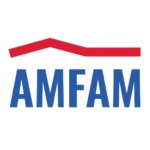
Why It’s a Top Pick: Though not available in every state, American Family is a regional powerhouse that consistently earns top marks for customer satisfaction, often beating out its larger national competitors. It excels at building customer loyalty through its dedicated agents.
- Pros:
- Excellent J.D. Power customer satisfaction scores.
- KnowYourDrive telematics program offers strong discounts.
- Great loyalty discounts and a very strong bundling (home/auto) package.
- Cons:
- Limited availability (not a 50-state provider).
- Online quote tool is not as smooth as top competitors.
- Key Discounts: Multi-policy, loyalty, good student, KnowYourDrive, and generational (if your parents were AmFam customers).
- Best For: Drivers in the states where it operates who prioritize a great customer service experience.
10. Liberty Mutual

Why It’s a Top Pick: Liberty Mutual is a massive global insurer that offers a dizzying array of discounts and a simple online purchase process. It’s a great “all-in-one” shop for auto, home, and life insurance, and its RightTrack telematics program is one of the easiest to use.
- Pros:
- Huge number of available discounts (e.g., online purchase, early shopper, hybrid vehicle).
- Strong digital tools for quotes and policy management.
- RightTrack gives you a discount just for participating and can lead to savings of up to 30%.
- Cons:
- Has a high NAIC complaint ratio compared to its peers.
- J.D. Power customer service scores are often below the industry average.
- Key Discounts: Homeowner, multi-policy, military, good student, safe driver, and online purchase.
- Best For: People who are confident “discount hunters” and want to get the lowest price by stacking as many as possible.
Understanding the Core Types of Car Insurance Coverage
Choosing a company is only half the battle. You also need to choose the right coverage. Here’s a plain-English guide to what your policy actually includes.
Liability Coverage (The Legal Minimum)
This is the one part of your policy that is legally required in almost every state. It pays for the other person’s damage if you cause an accident. It’s broken into two parts:
- Bodily Injury Liability: Pays for the other person’s medical bills, lost wages, and pain and suffering.
- Property Damage Liability: Pays to repair or replace the other person’s car or property (like a fence or mailbox).
- Our advice: Do NOT just get the state minimum. A serious accident can easily exceed $100,000 in medical bills. We recommend at least $100,000/$300,000/$100,000 in coverage.
Collision Coverage
This pays to repair or replace your own car if you are in an accident, regardless of who is at fault. This covers collisions with other cars, poles, guardrails, or even a pothole. If you have a car loan or lease, your lender will require this.
Comprehensive Coverage
This pays to repair or replace your own car for non-collision events. Think of it as “Act of God” coverage. This includes:
- Theft
- Vandalism
- Fire
- Falling objects (like a tree branch)
- Hitting an animal (like a deer)
- Weather (hail, floods)
Like collision, this is required by lenders.
Uninsured/Underinsured Motorist (UM/UIM)
This is one of the most important and overlooked coverages. What happens if you’re hit by someone with no insurance or not enough insurance? Your UM/UIM coverage steps in and pays for your medical bills and, in some states, car repairs. This is a must-have.
Medical Payments (MedPay) & Personal Injury Protection (PIP)
These cover your and your passengers’ medical bills after an accident, regardless of who was at fault. In “no-fault” states, PIP is required and helps pay for medical bills and lost wages quickly, so you don’t have to wait for a legal settlement.
How to Get the Cheapest Car Insurance Rates in 2025
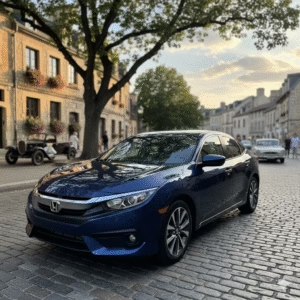
The price you’re quoted is not set in stone. Use these five strategies to actively lower your premium.
- Shop Around, Every Single Year.
This is the #1 rule. Insurers change their pricing models constantly. The company that was cheapest for you three years ago is likely not the cheapest today. You must get at least three to five quotes before every renewal.
- Ask for Every Possible Discount.
Never assume you’re getting all the discounts you deserve. Get on the phone with an agent and ask them to go through the list. Common (and large) discounts include:
- Multi-Policy (Bundling): Combining home/renters with auto.
- Good Student: For high school or college students with a “B” average or better.
- Defensive Driving Course: A 4-hour online course can net you a 5-10% discount for three years.
- Pay-in-Full: Paying your 6-month premium at once instead of monthly.
- Affinity/Professional: Discounts for being a teacher, engineer, nurse, military member, or part of a college alumni association.
- Raise Your Deductible.
Your deductible is what you pay out-of-pocket before your insurance kicks in. Raising your deductible from $500 to $1,000 on Collision and Comprehensive can lower your premium by 15-30%. The rule: Only raise it to an amount you can comfortably pay from your emergency fund tomorrow.
- Enroll in a Telematics Program (If You’re a Safe Driver).
If you’re a careful driver who doesn’t speed, brake hard, or use your phone while driving, a telematics program like Progressive’s Snapshot or State Farm’s Drive Safe & Save can save you a significant amount.
- Improve Your Credit Score.
This is the “secret” factor. In all states except California, Hawaii, and Massachusetts, insurers use a “credit-based insurance score” as a primary factor in setting your rate. People with “Excellent” credit pay, on average, half as much as people with “Poor” credit. Paying your bills on time and lowering your credit card balances will directly lower your car insurance.
Frequently Asked Questions (FAQ) About Auto Insurance
- Q: What is the #1 car insurance company in the U.S.?
- By market share, the #1 company is State Farm. By customer satisfaction, the #1 company is USAA (though it has limited eligibility).
- Q: How much should I be paying for car insurance in 2025?
- It varies wildly. The national average is over $2,000 per year for full coverage, but your rate depends on your age, driving record, zip code, vehicle, credit score, and the coverages you select.
- Q: Is it cheaper to buy car insurance online or through an agent?
- Not necessarily. Online-first companies like Geico can be cheaper because they have lower overhead. However, an agent (like at State Farm or a local independent broker) can access discounts you might not find online and can do the “shopping” for you. Always check both.
- Q: Will my rates go up in 2025?
- Yes, it is very likely. Due to inflation, the cost of car parts (especially for high-tech cars), labor, and medical care has skyrocketed. Insurers are passing these costs on to customers. This is why it’s more important than ever to shop around.
How to Choose Your Best Plan

There is no single “best” car insurance company for everyone. The best company for your 18-year-old son with a speeding ticket (Progressive) is not the best for a 55-year-old military veteran with perfect credit (USAA), which is not the best for a 30-year-old homeowner who wants to bundle (Travelers or State Farm).
Your mission is clear:
- Identify your needs: Do you prioritize a local agent, or do you prefer a great app?
- Calculate your coverage: Start with $100/$300/$100 for liability and add Comprehensive and Collision if your car is worth more than $5,000 or is financed.
- Get at least three quotes: Include one from an agent-based company (like State Farm), one from a direct-to-consumer company (like Geico), and one from an independent agent who can quote multiple carriers.
By taking a few hours to do this research, you can ensure you have the right protection at the best possible price for 2025.


